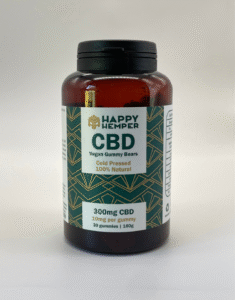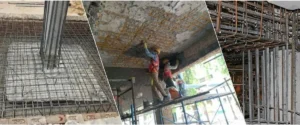Shipping expensive wines is not just about getting them from point A to point B — it’s about ensuring they arrive in pristine condition, preserving both their flavor and value. Whether you’re a collector sending a rare vintage to a buyer, a winery fulfilling online orders, or an enthusiast gifting a premium bottle, choosing the right wine containers for shipping is a crucial step in the process.
The wrong packaging could mean cracked bottles, spoiled wine, or a diminished reputation. The right one? Peace of mind, customer satisfaction, and preserved quality.
In this guide, we’ll explore the key considerations, types of protective packaging, and best practices to help you select the ideal solution for your valuable wines.
Why Packaging Matters for Premium Wines
Premium wines are sensitive to temperature changes, shock, and pressure during transit. Unlike everyday table wines, expensive vintages often have delicate corks, aged glass bottles, and finely balanced flavors that can be easily compromised.
Good wine packaging does three main things:
-
Protects against physical damage during handling, stacking, and accidental drops.
-
Prevents temperature fluctuations that can alter taste and quality.
-
Meets shipping regulations for wine transportation.
For high-value bottles, packaging is an investment in quality assurance.
Key Factors to Consider Before Choosing Wine Packaging
Before you select wine containers for shipping, you need to evaluate a few essential factors:
1. Bottle Size and Shape
Not all wine bottles are created equal. Bordeaux, Burgundy, Champagne, and specialty bottles vary in height, diameter, and weight. Ensure your packaging fits snugly to avoid shifting during transit.
2. Distance and Transit Time
A short local delivery might need less insulation than an international shipment that takes days or weeks. The longer the journey, the more robust your packaging should be.
3. Climate and Season
Shipping wine in summer versus winter presents different risks. Warm weather can cause expansion and leakage, while freezing temperatures may damage the cork or glass. Climate-controlled containers or insulated shippers are ideal for extreme conditions.
4. Shipping Method
Courier services, freight, or air cargo each have different handling processes. Choose packaging rated for the level of stress your shipment will face.
Types of Wine Containers for Shipping
Selecting the right type of wine container depends on your priorities — whether that’s maximum protection, eco-friendliness, or cost efficiency.
1. Molded Pulp Wine Shippers
Eco-conscious and cost-effective, molded pulp shippers cradle bottles snugly in a recyclable, biodegradable material. They absorb shocks well but offer less insulation against temperature changes.
Best for: Domestic shipping and environmentally conscious brands.
2. Styrofoam Wine Shippers
Expanded polystyrene (EPS) is lightweight and highly protective. It provides excellent insulation for temperature-sensitive wines, making it ideal for longer journeys.
Best for: Shipping in extreme weather conditions or over long distances.
3. Double-Walled Cardboard Boxes with Inserts
These offer good all-around protection and can be combined with molded pulp or foam inserts for stability. They’re cost-effective and easy to store in bulk.
Best for: Businesses looking for a balance between protection and affordability.
4. Thermal Insulated Wine Shippers
These containers often include reflective foil liners, gel packs, or vacuum-sealed insulation. They’re designed to keep wine at a stable temperature for extended periods.
Best for: High-value wines shipped internationally or during peak summer/winter seasons.
5. Custom Wooden Crates
For luxury wines and collector’s editions, custom crates offer a premium presentation alongside strong protection. They can be fitted with foam or felt interiors for extra security.
Best for: Gifts, auctions, and rare vintage shipments.
Best Practices for Packaging Expensive Wines
Regardless of which type of container you choose, following these best practices will help ensure your shipment arrives safely.
1. Secure the Bottle in Place
The bottle should have no room to rattle or slide. Use inserts, dividers, or padding to immobilize it completely.
2. Layer Protection
Think of your packaging like an onion — multiple layers reduce risk. A padded insert inside a sturdy outer box provides better protection than a single layer.
3. Control Temperature
If you can’t use refrigerated transport, opt for insulated packaging and gel packs to maintain stable temperatures.
4. Label Clearly
Mark packages with “Fragile,” “This Side Up,” and “Contains Alcohol” (where legally required) to encourage careful handling.
5. Comply with Regulations
Shipping alcohol often involves specific carrier and regional regulations. Ensure your packaging meets legal and carrier-specific requirements.
How Wine Shipping Boxes Helps Protect Expensive Wines
When it comes to safeguarding valuable bottles, trusted suppliers like Wine Shipping Boxes provide a range of protective solutions tailored to different shipping needs. From durable molded pulp shippers to insulated packaging, they understand the importance of balancing cost, sustainability, and performance. Working with a specialist ensures you get containers designed to meet industry standards for wine safety.
Sustainability and Eco-Friendly Options
With increasing focus on environmental responsibility, wineries and retailers are seeking eco-friendly wine packaging options. Molded pulp shippers, recyclable double-walled boxes, and biodegradable fillers reduce environmental impact without compromising on safety.
Going green not only benefits the planet but can also enhance your brand image among eco-conscious consumers.
Common Mistakes to Avoid
Even with premium wine containers for shipping, mistakes in preparation can undermine protection. Avoid these pitfalls:
-
Using oversized boxes that leave too much room for movement.
-
Skipping insulation when shipping during hot or cold months.
-
Overlooking international regulations, leading to delays or confiscations.
-
Reusing damaged boxes, which compromise integrity.
Final Thoughts
Choosing the right packaging for expensive wines is more than a logistical decision — it’s an act of preserving craftsmanship, heritage, and value. By considering bottle type, climate, shipping method, and sustainability, you can select wine containers for shipping that keep your bottles safe from cellar to customer.
With the right approach and the help of trusted suppliers like Wine Shipping Boxes, you can ship even the rarest vintages with confidence, knowing they’ll arrive in the same condition as when they left your hands.

